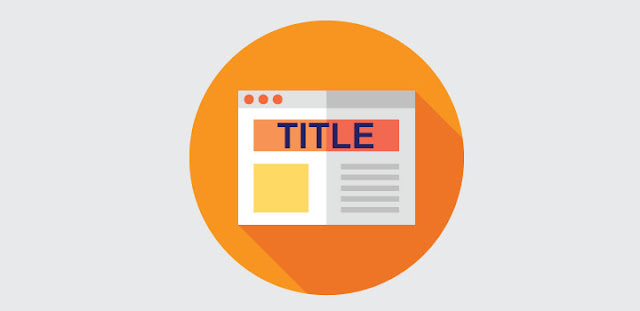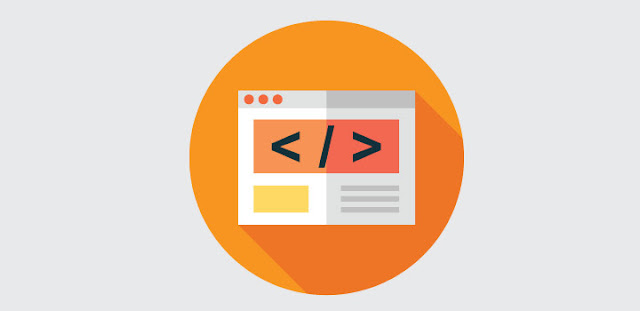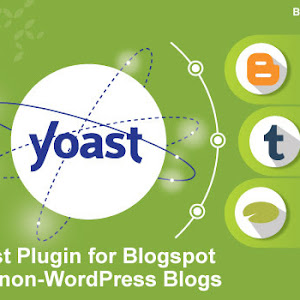
These are the On-Page SEO Techniques that everyone will be talking about from basic user to the experience SEO expert for better SEO of your blog posts. The fact which is undeniable in the field of online marketing is your website has to be optimized in order to get the best results from search engines.
In previous SEO post, we discussed building a knowledge base for the SEO, why we need SEO, its benefits, basics on how search engines work and how important it is to do SEO for your website.
If you haven't got a chance to go through the previous post, I will request you to make a quick read here, What is SEO and the Importance of SEO in Digital Marketing.
If you haven't got a chance to go through the previous post, I will request you to make a quick read here, What is SEO and the Importance of SEO in Digital Marketing.
Hence for a successful SEO strategy, it is the right time to invest your efforts in implementing these On-Page SEO strategies. These strategies will help your blog get high traffic from SERP (Search Engine Results Page).
I assume we have a basic understanding of SEO and can start digging more into the on-page SEO strategies. So, let's begin with it.
The SEO techniques are mainly classified into two categories:
- On-Page SEO Techniques and
In this article, I'm going to lay out some of the important on-page SEO techniques. But firstly, let's understand the meaning of the term On-page SEO before we jump into the actual conversation on the techniques.
The technique or term called as the on-page SEO because it deals with optimizing different parts of your website or a web page to get the better ranking in the SERP. Few expert bloggers may define On-Site SEO Strategy as different from On-Page SEO Strategy.
In reality, On-page SEO and on-site SEO are the same but two different terms derived to enlist a methodology applied to the entire site at once or to an individual web page.
Below are the factors that ensure your on-page SEO:

The most vital aspect of getting online success is "publishing quality content". I can not stop myself repeating the same phrase said over many online articles that "content is the king", and it is very much true. Content could be thought of as a foundation for all your SEO efforts. If you do not have quality content all other SEO strategies would fail.
I would request you to go through the article How to Write a Perfect Blog Post to understand all the factors that could create a post full of quality content.
1. Effective content writing

The most vital aspect of getting online success is "publishing quality content". I can not stop myself repeating the same phrase said over many online articles that "content is the king", and it is very much true. Content could be thought of as a foundation for all your SEO efforts. If you do not have quality content all other SEO strategies would fail.
I would request you to go through the article How to Write a Perfect Blog Post to understand all the factors that could create a post full of quality content.
SEO Best Practices:
- Post unique and quality content for readers.
- Make it engaging so readers don't get bored reading it. Add facts, questions, story to make it interesting.
- Use striking headlines in the blog post to drive users attention.
- Organize content in a better way for a good reading experience. Use small paragraphs consisting of 4 or fewer lines, write appealing headings, subheading, use bullets wherever necessary, use bold, italics and colored words.
- Include pictures in your blog post to enhance the reading experience.
- Proofread your blog post before you make it live to avoid spelling and grammatical errors.
2. HTTP (Hypertext Transfer Protocol) or HTTPS (Secure Hypertext Transfer Protocol)

In the year 2014 Google has officially announced that switching your website over to HTTPS version (which is more secure) will give a minor boost to your URL in the SERP. Well, Google is the king in the internet sphere and we must agree to its instruction if it benefiting us.
There is a reason for Google to prefer HTTPS over HTTP. HTTP or HTTPS for that matter is nothing but the mechanism used to transfer the information over the internet.
In technical term, HTTP is a "stateless" protocol meaning it doesn't remember or keeps the log of how information is passed from point (called as a node) A to point B. Rather HTTP prefers to focus on how information is presented to the user.
Whereas in the case of HTTPS which uses an extra layer called SSL (Secure Sockets Layer) to transfer the data in a more secure way and avoid unauthorized access to the confidential information being sent.
SEO Best Practices:
- If you find this explanation as a brain exercise then simply remember that using HTTPS over the HTTP gives you a more secure environment for using the internet.
- Plus, Google adds value to your blog by giving a boost in the SERP.
3. Optimizing for mobiles

The count of mobile internet users is more than that of desktop internet users. As per hostingfacts.com studies, 52.21% of web traffic comes from mobile devices. Several studies say that there is an increase in the use of mobile internet and it will keep on growing in the coming time.
As a fact, mobile users might leave your site if it is not optimized for mobile devices. So important thing to note that we shouldn't lack behind in optimizing our website or blog for mobile users. Your website should function well on both desktop and mobile devices to offer the best services for both the users.
There are different techniques and mechanism for optimizing your web pages for mobile devices. Google has listed some of the methods for optimizing your website for search engine. However, Google recommends using responsive designs where URL and HTML of the page remain the same for all users irrespective of their devices and screen size.
SEO Best Practices:
Avoid some of the common mistakes listed below to get better rank from Google.
- Do not add any flash content as most of the mobile browser doesn't support flash and hence can not render them.
- Configure viewport correctly as it helps browser scale your webpage depending on the mobile device screen.
- Use a bigger font for the better mobile experience.
- Sizing content is necessary to avoid scrolling of the web pages when you adapt to mobile view. Clickable or touchable elements shouldn't be placed too close to each other so clicking or touching on particular elements becomes difficult.
- Pop-ups which difficult to close or dismiss may lower your search engine rank.
4. Page speed matters

The technology is constantly taking a new leap and upgrading drastically. Things are getting fast and real time. Those days are gone when people used to wait for the site to load. In the current time if your site doesn't load in 3 seconds people will leave your site and look for another source as resources are not scarce. This behavior of the users increases the bounce rate of your web page which ultimately results in lowering the rank of your site.
Also from Google perspective, slower pages may cause Google crawlers not able to crawl through all web pages. As a result, not all web pages will be indexed by Google.
SEO Best Practices:
SEO Best Practices:
So how do we ensure your web page loads quickly?
- Use this tool from Google to track page speed and make necessary changes in your web page.
- Optimize images, meaning you need to save the image for web preferences. Photoshop and various online tools help you do this. Do not upload high-resolution images as it is, instead compress them. High-resolution images have heavier file size and may take time to load.
- Load background images through CSS
- Remove unnecessary meta tags
- Minimize unnecessary client-side scripts and javascript
5. Easy site navigation

When we talk about site navigation it does not involve only top menubar links or sidebar navigation links but it also involves links from the body of the blog post. Hence do not refrain yourself from adding links to the other posts from your blog. But while adding these links add them only to the meaningful places than overstuffing them all over.
Why it is necessary to add links? Because it helps Google understand the architecture of your blog. More the links Google is able to crawl through your pages, more pages will be indexed resulting in more visibility for your blog. Read this blog post to know How Internal Links can Boost your Ranking.
SEO Best Practices:
Some of the tips for having good navigation architecture on your blog
- Add navigation menu at the top of the web page which lists important web pages from your site. Avoid using nested or drop-down menus. If you fill an urge to use drop down menu implement them using HTML and CSS.
- JavaScript-based menu fails to render on the browser on which JavaScript is disabled. Secondly, Google crawler would not be able to make through these JavaScript links.
- Add links in the body of your blog post to other posts from your blog. Add to the only places where you feel it is important to do so.
6. Writing a good page title

The title tag of a web page gives a name to the web page and helps the search engine determine what is your web page about. It appears in the <title> tag.
A title is the first thing any user notices when he makes a query into the search engine. It becomes a deciding factor from user perspective whether to click on your link that appears in SERP listing. Hence it should be attractive enough to draw visitor's attention.
From the search engine perspective, the title of your web page is used as a heading in SERP. The more clicks you get from SERP, better will be your site rank. Secondly, the same title is used by social media platforms to generate a summary box when someone shares the link of your web page.
SEO Best Practices:
Below are the tips for crafting a good title for your web page:
- The title should be attractive enough to draw visitors attention and pursue visitors to click on the link in SERP.
- The length of the title should not exceed 70 characters including the spaces. If it exceeds Google will truncate it to display the title in one line.
- The important keywords of your post should be included at the beginning of the title as most of the users tend to pay attention to the initial words placed in the title. Also, it should be formed in such a way that it looks a naturally formed sentence or phrase.
- Do not overstuff your title with the keywords and only include the most important keywords in your title. The overstuffed title may create a negative impression and may not rank well in SERP.
7. Selecting highly-effective keywords

Keywords are the terms or phrases used by the users to find particular information or a web page by using search engines. It is very significant to plan correct keywords for your blog post in order to drive the correct audience to your blog and get better visibility in the search engines.
A free tool Google Keyword Planner helps you to target the correct keywords for your blog post. Also, you could use the search related phrases that appear at the bottom of the Google page results.
An important point to note that as Google announces that they are no longer using a meta keyword tag from a long period to decide a ranking factor of a web page. Due to excessive use of the irrelevant keywords in a web page by users, Google discontinued referring to keywords mentioned in the meta keywords tag as the new policy tends to give more quality results in the SERP. Hence adding meta keywords is not going to make any difference.
SEO Best Practices:
- Use keyword planner tool to decide keywords to be used in a blog post
- Use long tailed keywords to drive more traffic to your blog. The commonly used or shorter one has more competition and are not easy to get higher rank in SERP. Long-tailed keywords have less competition and are easy to target to search engines and users.
- For better results place the keywords in the ideal places. The most important keywords should be placed in the title, URL of a web page, meta description tag and in the first paragraph of your blog post.
- All secondary keywords can be distributed and placed in more natural formed sentences throughout the blog post.
- Using keywords in the tag, bold words and alt text of the images also helps a web page optimized for search engines.
- In order to stay in the competition, you will have to update the keywords on a periodical basis to meet the new requirements and changing trends.
8. Writing functional meta description

The aim of the meta tag is to provide information about your web page to search engines. In this context meta description is the small paragraph written for the purpose to describe the inner content of your web page to the search engines and your potential visitors.
There is no limit on setting how your meta description should be long but generally, Google truncates the end part if it is exceeding 160 characters. Google does not use it for ranking your web page but a well-written description could help your web page get better Click Through Rate (CTR).
SEO Best Practices:
- Include important keywords in the meta description text. The search engines highlight these words by displaying them in bold text when someone makes a query into the search engine.
- Meta description text should be simple to understand by all users yet compelling to drive users attention and make him click on your link.
- It is a fact that search engines do not always use meta description text in SERP. Instead, they use the most relevant text from your web page for the query entered by the user. Hence you should always focus more on writing a qualitative blog post than meta description.
- Each page on your site should have a unique meta description.
9. H1 to H6 heading tags

Heading tags are very useful to draw visitors attention to the important sections of your blog post. It also helps you organize the content in a more reader-friendly manner.
Form search engine perspective, Google crawl through your web page to understand important sections of your web page.
Do not get confused between header ( <head> ) tag and heading ( <h1> to <h6> ) tag. The header tag is used to define web page header and information of the web page. Whereas heading tags are used to define a section of the web pages and treated as heading to the various web page sections.
SEO Best Practices:
- H1 to H6 let you define heading for your web page. Though it is advisable not to use all of these heading tags to create a better impact on the users and search engines.
- Use the H1 tag only for once throughout the web page. Use it so wisely that creates a good understanding of information inside it to the user and search engine. Generally, it is used to write the title of the blog post at the beginning of the blog post.
- Use H2 for all other subsequent headings to structure the entire blog post.
10. Optimizing images

Using images in a blog post is a good practice to enhance the appeal of the overall blog post. However, if these images are not optimized for search engines, you are losing a good chance of having visibility to more visitors.
The main difficulty arises when search engine bots are not able to understand the images as they cannot look through images as humans do. They need a text associated with images to understand the content of the images and how it is related to the rest of the content on a blog page.
SEO Best Practices:
- Give a readable file name to each image before you upload it for your blog post. Avoid using spaces in the file name as it renders "%20" character in URL of the image which makes it difficult to read. Also, do not use an underscore ( _ ) in the file name to separate two words as the whole string is considered as a single word which makes search engines difficult to understand it. Use a hyphen ( - ) to separate words in a filename which search engine can easily understand. "my-image-for-a-blog-post" is a good example of a filename optimized to meet search engine expectations.
- Use .jpeg format if possible rather than using other formats as jpeg images come in lesser file size.
- Do not include high-resolution images as it is. Instead, resize and compress them and use them in web preferences format.
- Include alt text in images for search engines to understand the content of the images.
- Optimized images have a better experience, faster load time and eventually reduces the bounce rate of the web page.
11. Internal Links

The internal link is the link that redirects a user to a different web page of the same website. So basically it is the link of another web page from your website.
Having internal links in your blog post is essential because it helps a search engine understand the architecture or the structure of your website. Adding internal links to your blog post helps visitors stay on your website and increase user engagement.
SEO Best Practices:
- Add internal links at meaningful places in your blog post. It helps Google understand the structure of your website and have better visibility to other posts.
- Internal links reduce bounce rate and increase your rank in search engines for particular keywords.
- Internal links create a better user experience through important links placed inside the article.
- Ensures to develop a page authority across the site for various blog posts.
12. Anchor text

Anchor text is nothing but the text on which hyperlink is applied. The anchor text sends a signal to search engines as some important keywords of the blog post and hence needs a little attention to as which text needs to be used as a hyperlink.
The links placed inside the article by using a proper anchor text helps search engines determine what is your web page about. While adding hyperlinks make sure to use keywords or descriptive text for the anchor text.
SEO Best Practices:
- Keywords used in anchor text helps the search engine determine what is your web page about. Hence use descriptive phrases for hyperlinking than more generic text like "click here".
- Do not add links to websites which don't have a good reputation over the internet. Adding links to such site may have a negative impression on your website.
13. Writing SEO friendly URL

The purpose of having a URL address was to display a text that a human could read instead of displaying numbers (IP address). A URL doesn't drive your ranking immediately but influences the CTR.
Hence it is necessary to write a perfect URL for your blog. A URL slug (Slug is the descriptive text in the URL added after the domain name) should clearly state the what is your page about.
SEO Best Practices: Consider below tips for writing an SEO friendly URL.
- An URL should consist of important keywords from your blog post. It should match the title text of your blog post. So it doesn't create confusion in the mind of visitors of being these two things different.
- Keep the URL text simple, easily readable but compelling enough to draw visitors attention.
- Keep them short as Google truncates the long URL.
- Google completely ignores the stop words like(a, and, but, or, of, the, etc.) has no value in SEO, but adding them increases better readability. So adding them to very important places where it serves the purpose has no harm.
- Do not include spaces or underscores to separate the words in URL. Google encourages to use hyphens instead of underscores.
Conclusion:

Finally, if you optimize your web pages as per the described points, there is nothing which can stop you from getting better results from the search engines.
Any paid on-page SEO techniques or any plugin you use for the betterment of SEO will encourage you to use these tips to get better results from the search engines. Hence follow these tips wisely and ensure your blog is optimized in the best way for the search engine.
Please comment and share your feedback if you like this post. Also, do not forget to share this post on your social media.
In a coming post, I'll share tips on how we can go for off-page SEO techniques. So stay tuned and follow my blog, follow me on social media and share the love! Thank you for your time.












5 comments
This is a great article now I know much about Seo and how I can optimiz my site.
ReplyDeleteThank you Joseph!
DeletePlz feel free to visit back for more content on the Blogging Hacks.
Very informative and helpful!
ReplyDeleteVery informative
ReplyDeleteThere are significant onpage seo techniques which need to be look out while doing seo of the website as it is well said in the language of digital marketing Auckland that content is the king so be updated with your content and keep it unique and creative as this is the first step to attract the attention of customers to your website so it should be effective and just ensure and be particular in using the http and https and make sure that your website should be optimized for mobile compatible devices as keeping in mind that half of the population are on the mobile so your website should be mobile compatibles.
ReplyDelete